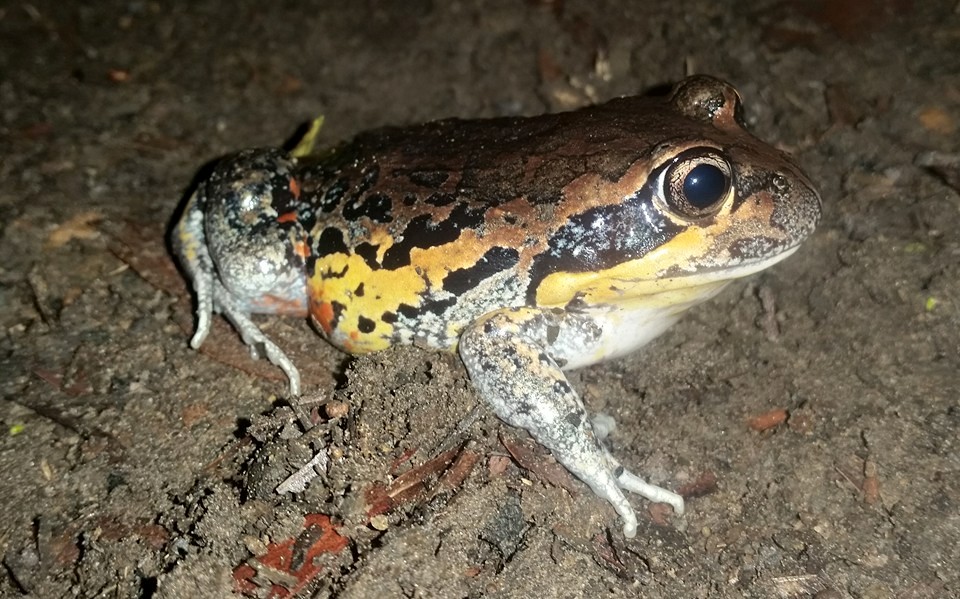
Frogs in the Bundaberg Region have enjoyed recent rain, with many species lapping up the wet conditions in ponds, back yards and gardens.
It's a time of year Alexandra Park Zoo curator David Flack loves and, after his work caring for many different species of animal during the day, the Bundaberg man focuses his attention to frogs.
It’s a passion Dave said he has had for many years.
So much so the animal lover also wears the volunteer hat as the Bundaberg area coordinator for the Queensland Frog Society and said, with the recent rainy weather, now was the perfect time for residents to get in the know about the local frog world.
“Frogs are important for several reasons,” he said.
“Firstly, they play a significant role in the ecosystem as both predator and prey for other organisms.
“Frogs consume lots of insects and without them insect numbers would increase including disease carrying species such as mosquitoes.”
Dave said secondly, frogs played a role as environmental indicators.
“Due to their amphibious lifestyle, and their unique ability to absorb moisture through their skin, environmental pollutants, contaminants, and climate change, can severely affect the abundance of frogs in an area,” he said.
Rain the perfect time for breeding frogs
Dave said while he loved all types of frogs, there were a few species that were his favourite.
“It’s hard to go past the green-coloured tree frogs – they are brightly coloured and ooze charisma,” he said.

“One of my absolute favourite species is the red-eyed tree frog (Litoria chloris) as it a very handsome frog with distinct lime-green and lemon-yellow skin and bright red eyes!
“Another of my personal favourites is a Western Australian species called the turtle frog (Myobatrachus gouldii) – they are a pinkish-brown species that many people mistake for a baby turtle that is ‘so young it hasn’t grown a shell yet'.”
With the recent rainy weather, Dave said frogs in the Bundaberg Region would be and about and heading to their local breeding sites for egg laying.
“If you happen to go to one of these sites, you should hear a large chorus of male frogs calling for a mate – these choruses can be extremely loud and some of the calls of certain species are at high frequencies so you may need earplugs if you are going to be there for any length of time,” he said.
“Many people are experiencing frogs breeding in their backyard ponds, or hearing frogs call in their backyards.
“Keep an eye out while driving at night – not every toad-shape on the road is a cane toad, many frogs will need to cross roads to get to their closest breeding site.”
Frog ID app keeps frog species in check
Dave said for those who come across a frog and want to know more, a handy little app called FrogID, produced by the Australian Museum, could be used to record frog calls.
“Staff at the museum listen to and identify the frogs in the recording and will send a response back letting you know what they have identified,” he said.
“All of the data that is collected is used to identify where frogs are thriving (or not doing well) as well as tracking the cane toad.”
“It also allows researchers to learn about how frogs are adapting to a changing environment by matching calls to weather and habitat.”
Dave said while the wet weather was hanging around, it was the perfect time to get out and look for native frogs in back yards and natural areas.
“Sign up and start recording frog calls with the FrogID app and start contributing to citizen science,” he said.
“It’s a great family activity that will get the kids outdoors and engaging with nature.”

How you can protect the local frog community
Dave said to keep your backyard full of thriving frogs, there were a few things to do, the first was to keep pet cats locked up at night.
“Just the presence of a predator like a cat or dog may be enough to prevent the frogs from making your yard its home,” he said.
“Provide a frog friendly garden by planting lots of native plants that attract insects, installing a frog pond, and by providing refuge for them such as logs, rock piles, etc.
“If you have a backyard pond, stock it with native fish such as rainbow fish and pacific blue-eyes and not with exotics such goldfish or mosquitofish.”
To find out more about frogs or to the Frog ID app, click here.
- Other animal stories: Meet Bundaberg's Dougie the Dugong




